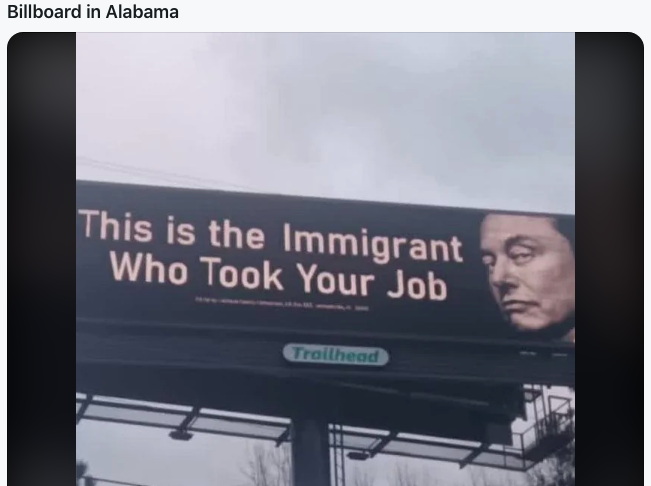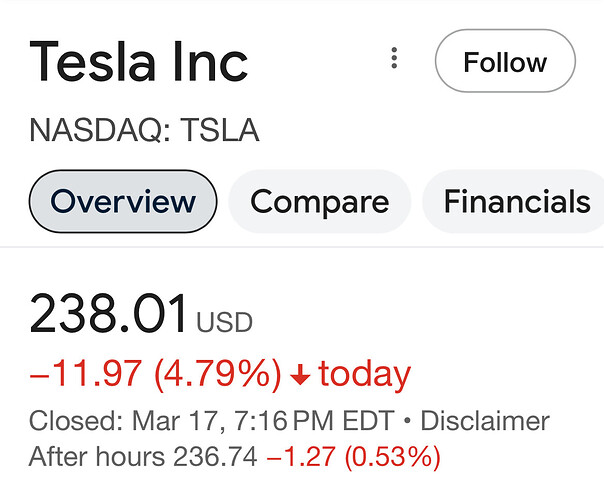I have a suspicion that it may be even worse than that; it’s entirely possible he’s trying to breed a new body to occupy once this one becomes old and decrepit, hence Neuralink.
Ooof, walking in front of the car, even when they’re setting up a situation where there’s insufficient stopping distance (and the car also has to swerve) - that takes some nerves, even if they fully believe in their technology.
Yeah, if you’re not going to have a human brain in control, you really need all the tricks (and therefore sensors) that you can bring to bear. Musk going with cameras-only really showed how utterly and completely unserious he is - as an self-anointed engineer, as the CEO of Tesla, as a thinker, period - and also how unserious Tesla is about safety and more generally the self-driving program.
Lidar is a hardware solution so costs money to put in cars and has to be ready for them. Visual recognition is a software solution so it’s free to distribute and can be shipped whenever, assuming your programmers can figure it out – and you can always promise investors you’ve been overworking them so it’s just a couple years away. Any decent capitalist would go with the vaporware over something they have to actually produce. ![]()
I assumed dropping all the hardware was just a stupid cost-cutting measure, but being able to turn the promise of the self-driving car into vaporware as a result isn’t something that I had considered. It really is perfectly in line with Musk’s way of operating. Now I vaguely recollect that he was actually touting the camera-only as a benefit of those cars - that the cars were hardware ready (or something to that effect) and were only awaiting the magic software to make full self-driving work “in the future”…

(And I read ‘Trailhead’ as Trollhead first time round. Seemed fitting.)
Toyotas, too.
But those vehicles actually worked.
Saying ‘there’s just something about Tesla drivers’ without exactly coming out and saying it in a way that could have legal consequences:
Tesla’s vehicles have the highest fatal accident rate among all car brands in America, according to a recent iSeeCars study that analyzed data from the U.S. Fatality Analysis Reporting System (FARS).
The study was conducted on model year 2018–2022 vehicles, and focused on crashes between 2017 and 2022 that resulted in occupant fatalities. Tesla vehicles have a fatal crash rate of 5.6 per billion miles driven, according to the study; Kia is second with a rate of 5.5, and Buick rounds out the top three with a 4.8 rate. The average fatal crash rate for all cars in the United States is 2.8 per billion vehicle miles driven.
The study also breaks down some of the data for individual models. The Tesla Model S has a rate more than double than average, at 5.8 per billion vehicle miles driven; meanwhile, the Tesla Model Y, the best-selling vehicle in the world has a fatal crash rate of 10.6, nearly four times the average. It ranked as the sixth worst vehicle overall. (The Hyundai Venue took the top spot overall, with a fatal crash rate of 13.9.)
The study’s authors make clear that the results do not indicate Tesla vehicles are inherently unsafe or have design flaws. In fact, Tesla vehicles are loaded with safety technology; the Insurance Institute for Highway Safety (IIHS) named the 2024 Model Y as a Top Safety Pick+ award winner, for example. Many of the other cars that ranked highly on the list have also been given high ratings for safety by the likes of IIHS and the National Highway Transportation Safety Administration, as well.
So, why are Teslas — and many other ostensibly safe cars on the list — involved in so many fatal crashes? “The models on this list likely reflect a combination of driver behavior and driving conditions, leading to increased crashes and fatalities,” iSeeCars executive analyst Karl Brauer said in the report. “A focused, alert driver, traveling at a legal or prudent speed, without being under the influence of drugs or alcohol, is the most likely to arrive safely regardless of the vehicle they’re driving.”
Saw a Cybertruck parked today and it took an effort not to do… something to it. I restrained myself on the reasoning that if I was going to risk trouble it would be better not to do it on the clock, carrying thousands of dollars of the store’s money on the way to a bank deposit. But it’s also true that I didn’t really have a plan for what to do. I’m not exactly carrying around a bundle of stickers or a can of spray paint with me all the time. Ideas?
From the online manual:
To prevent damage to the exterior, immediately remove corrosive substances (such as grease, oil, bird droppings, tree resin, dead insects, tar spots, road salt, industrial fallout, etc.). Do not wait until Cybertruck is due for a complete wash.
I wonder how much you could do just smearing a booger on it.
I don’t see how my 10-year-old Klean Kanteen, which is also brushed stainless steel, is more resistant to weathering than a CyberTruck. It has only carried coffee, which is rather acidic, through all kinds of weather over the years.
Cybertrucks are believed to be made of 301 stainless. At least, it corrodes like 301. Your Kleen Kanteen, like the DeLorean, is made from 304.
Put another way: your Kleen Kanteen is built with material that is fit-for-purpose.
Suggestion: write a message with a block of soap.
Parkrose Permaculture mentioned that chalk is easily carried around and not permanent in terms of vandalism; maybe just “Fuck Musk” chalked into the pavement in front of the car?
A magnetic bumper sticker isn’t permanent either, and you can put good messages on it.
I thought stainless wasn’t magnetic? They must have gone with the dollar store stainless.



